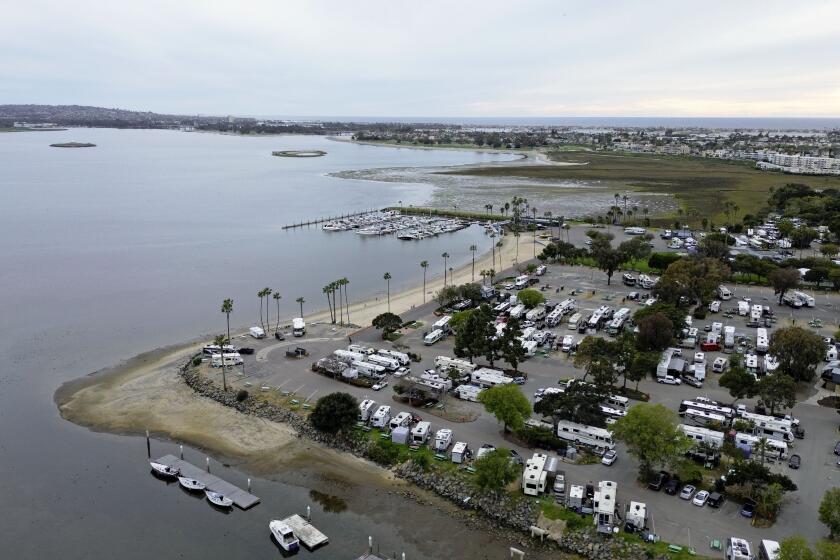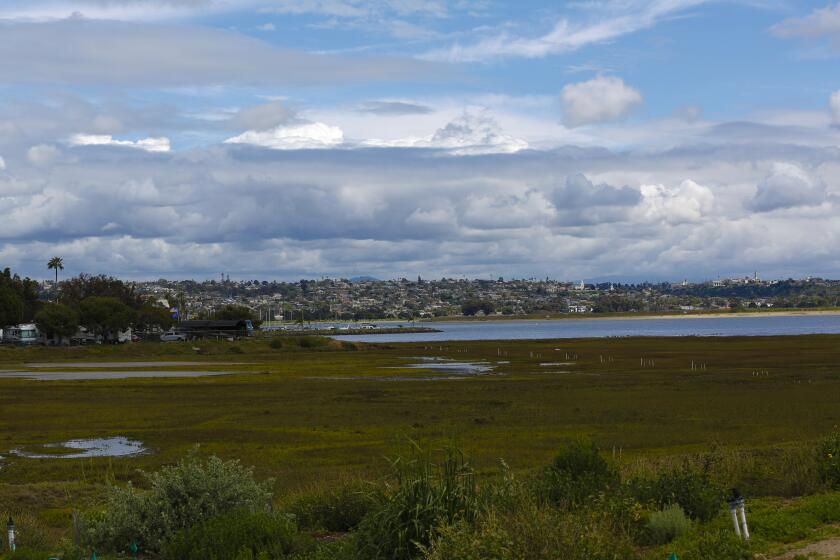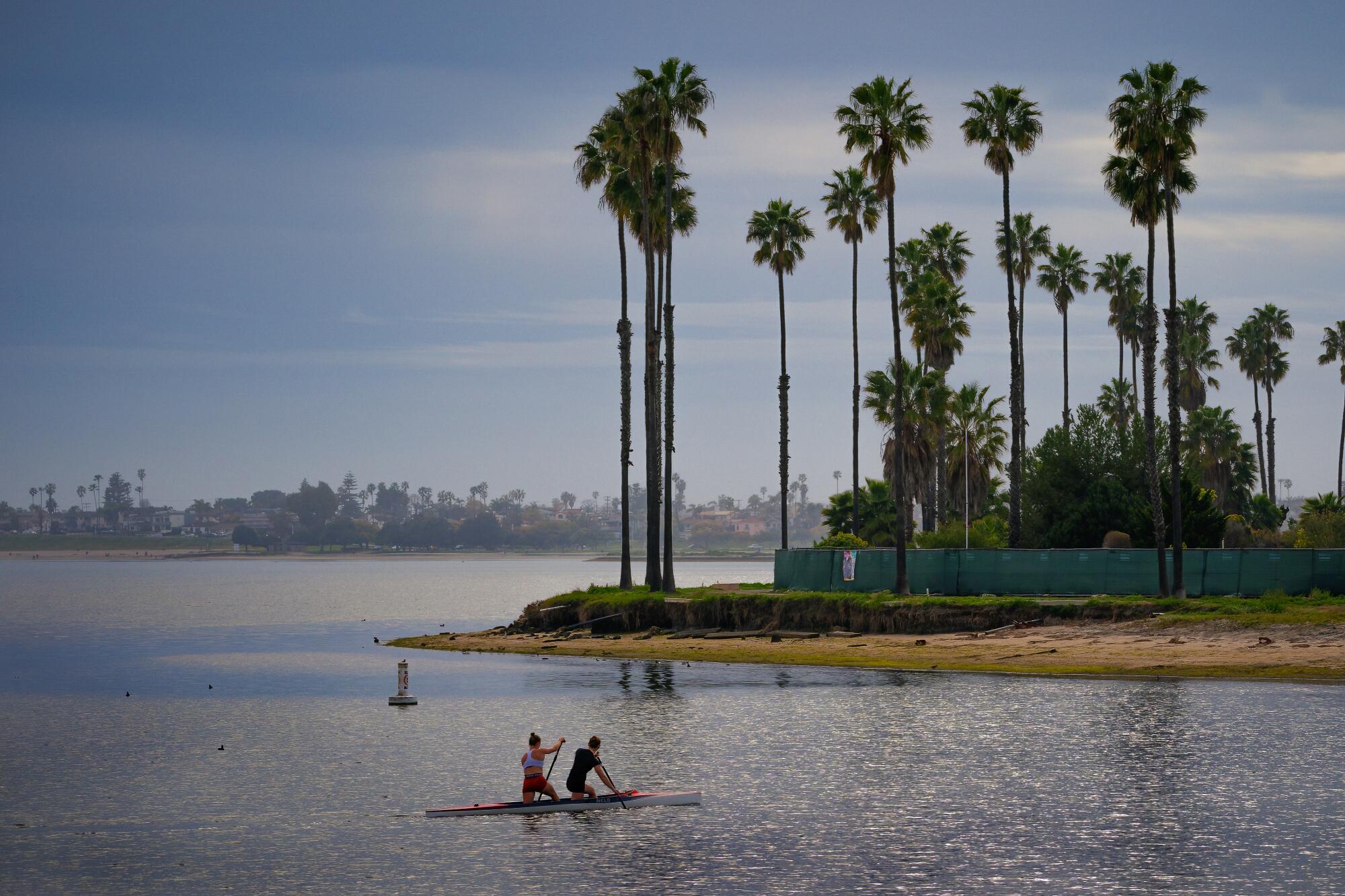
The city has revised its marshland-heavy proposal in response to criticism from golfers, tennis players and youth sports advocates.
- Share via
SAN DIEGO — Backlash against San Diego’s plan to transform much of northeast Mission Bay into marshland has prompted significant revisions, including a 10% boost in land devoted to golf, tennis, youth sports and other recreation.
City officials have also added language to the plan promising to minimize disruptions if fields are relocated. It also requires replacement recreation sites to be created before existing recreation sites are turned into marshland.
This story is for subscribers
We offer subscribers exclusive access to our best journalism.
Thank you for your support.
Although the revised plan stops short of giving recreation supporters long-sought assurances they won’t lose their sites to new marshland, it is generally being embraced by community leaders as an encouraging step toward compromise.
The number of acres devoted to active recreation in the revised plan increases from 60 to 66. Although that’s still only a sliver of the 505-acre area being redeveloped, it could allow all existing recreation activities to survive.
The area is now home to longtime local institutions including the Mission Bay Golf Course, Pacific Beach Tennis Club, Bob McEvoy Youth Fields and Mission Bay Boat & Ski Club.
Those groups are competing with nearby Campland on the Bay, which wants as many acres as possible devoted to camping, and a group of environmental advocates known as Rewild, which wants to max out climate-friendly wetlands.
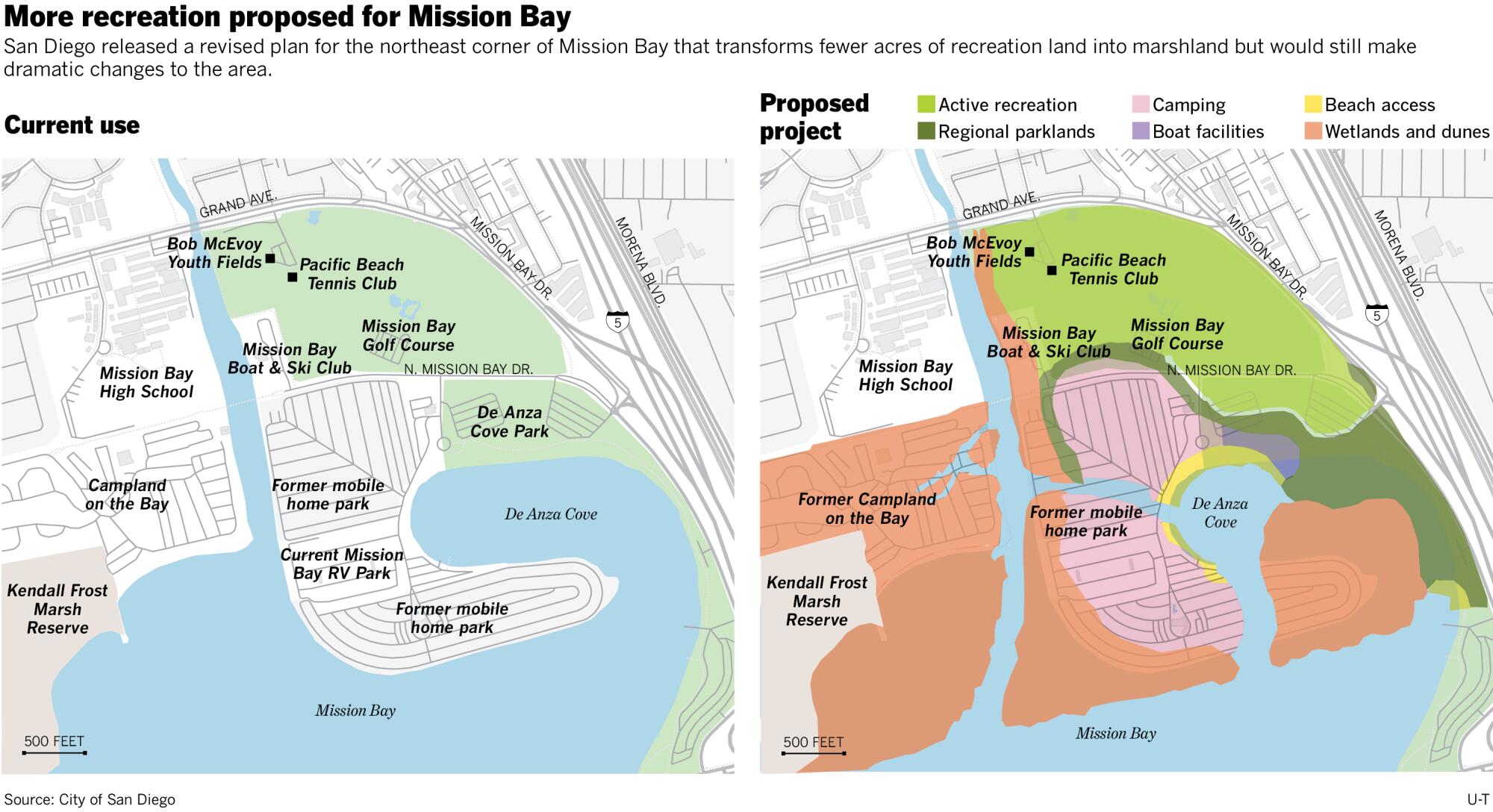
The redevelopment process was sparked by the long-awaited closure of the De Anza Cove mobile home park, which freed up 75 acres of land and created the potential for city officials to re-envision the entire northeast corner of Mission Bay.
Although none of the groups has been satisfied with any of the proposals released by the city during the last seven years, recreation supporters have been the most vocal critics this spring.
San Diego’s plan prioritizes climate resilience over recreation, and could jeopardize the futures of the area’s long-cherished sports fields, tennis courts and golf course.
City officials said Wednesday that the revised plan, released last week, is a direct reaction to complaints that recreation supporters made at meetings of the Mission Bay Park Committee and the Parks and Recreation Board.
“The plan we’ve put forward is our best attempt to reach a compromise between all these various and very divergent interests,” said Kelley Stanco, the city’s deputy director of environmental policy and public spaces.
“To give the recreation groups a little bit more wiggle room and assurance, we shifted six acres,” she said. “We’re trying to get as close to an ideal compromise as we can, but we realize that not everyone is going to get what they want.”
Stanco said city officials couldn’t guarantee any individual activity would survive the transformation.
“Everybody who has an interest in De Anza wants assurances, but that’s a difficult thing to do at this planning level, which is high-concept and high-vision,” she said.
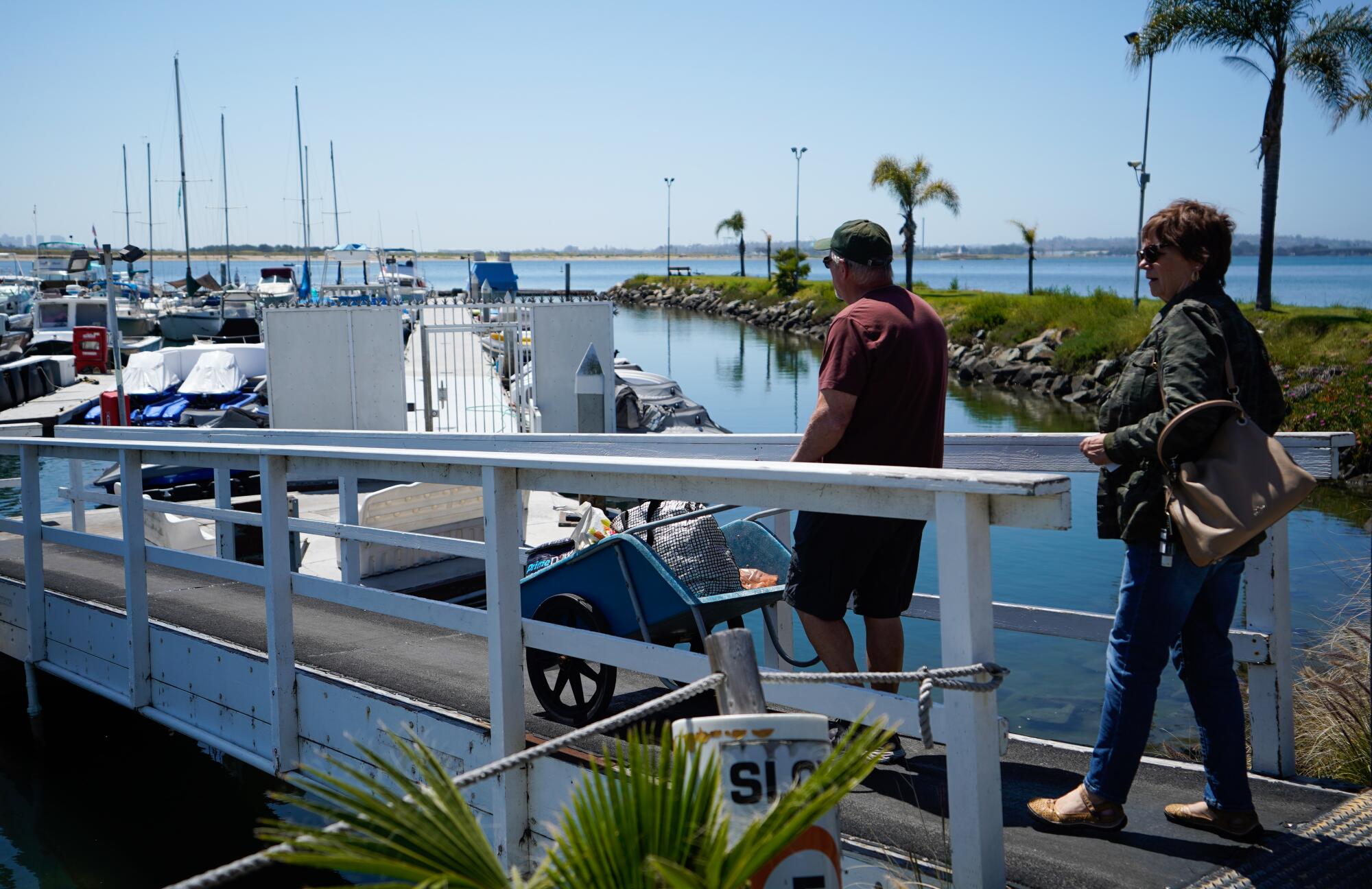
The San Diego City Council is scheduled to approve this fall a concept plan designating which areas will be devoted to marshland, camping and recreation. In coming years, the council will specify which particular activities will occupy the recreation areas and precisely where they’ll be.
The revised plan devotes 48 acres to camping, down from 62 acres that exist today, and about 260 acres to marshland and dunes, a dramatic increase from the 82 acres that exist today.
Marshland can boost water quality, pull carbon out of the air and help fight sea-level rise and its impacts.
Officials also revised their latest proposal, boosting land for active recreation and adding a third public beach
Stanco said the additional six acres of recreation were created partly by shrinking the size of new dunes planned for the east side of Rose Creek next to the McEvoy fields. The change will likely allow one more field to remain where it is.
She said the city didn’t completely abandon plans for the new dunes because they are crucial to addressing climate change and rising seas with nature-based solutions.
The water level is expected to rise in coming decades in Rose Creek and the marshland planned west of it, so dunes will be essential to prevent flooding of the nearby recreation areas, she said.
“If you don’t provide a natural tiered transition that can absorb some of those impacts, then you are constructing a very sort of artificial transition with walls and things like that,” Stanco said.
The latest city proposal was praised Wednesday by Marcella Bothwell, chair of San Diego’s Parks and Recreation Board and a joint panel of her board and the Mission Bay Park Committee focused on the northeastern corner of the bay.
“With the added six acres of active recreation space, most of the existing recreation should not be disrupted in the long-term,” said Bothwell, who also praised the city for promising not to remove any recreation sites without what she called “timely replacement.”
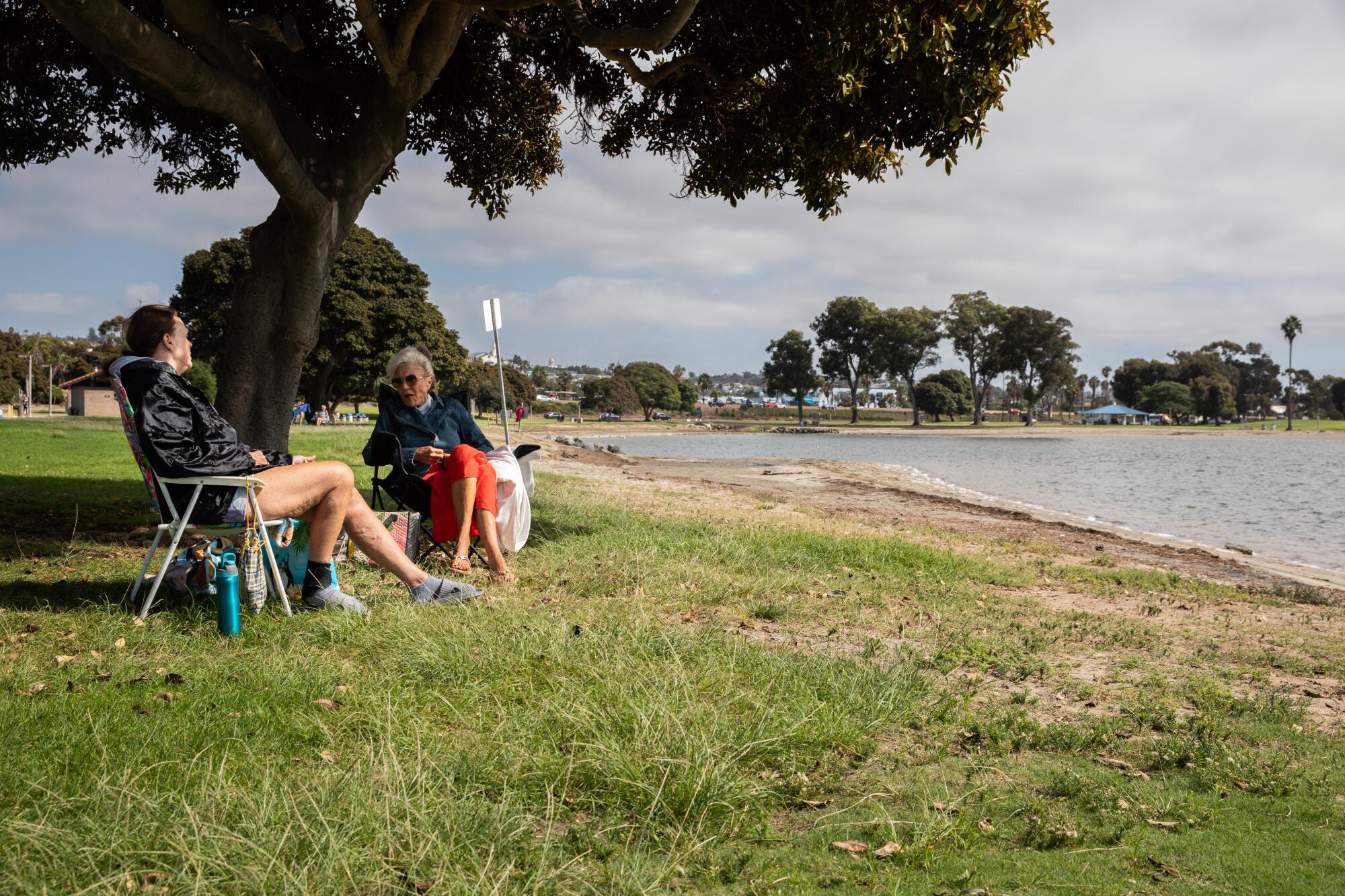
Tennis player Gary Kent said the latest proposal was a “very encouraging” compromise.
“It was crazy to get rid of this beautiful area of active recreation that people love,” he said. “It’s kind of a popular sport to criticize the government, but it’s great when they do something like this. I hope they follow through.”
Billy Bonelli, chairman of the Mission Bay Youth Field Assn., also called the latest proposal encouraging. But he said more refinements and assurances are needed.
“We will remain active sharing how important McEvoy is to our community’s kids and families while waiting on a more defined and achievable plan,” he said.
Susan Crowther, a member of the Pacific Beach Town Council, praised the new compromise, stressing that the area lacks recreational opportunities and that high-rise residential development is planned on the nearby trolley line that opened in 2021.
Andrew Meyer, leader of the pro-marshland Rewild coalition, said the city must remain focused on the big picture while making compromises.
“We appreciate that the city is working to keep the important neighborhood recreation in the park,” he said. “There is plenty of space for those to stay and be improved as the city creates a new park for the coming century. But don’t create that space at the expense of Rose Creek — our park must improve Rose Creek and the bay, and we need wetlands and buffers to do that.”
Battle continues over balance in park’s northeast corner between recreation, nature
The proposal, which could be revised again, is scheduled to be presented to the Mission Bay Park Committee and the Parks and Recreation Board in July and the Planning Commission on Aug. 31.
More to Read
Sign up for Essential California
The most important California stories and recommendations in your inbox every morning.
You may occasionally receive promotional content from the Los Angeles Times.

